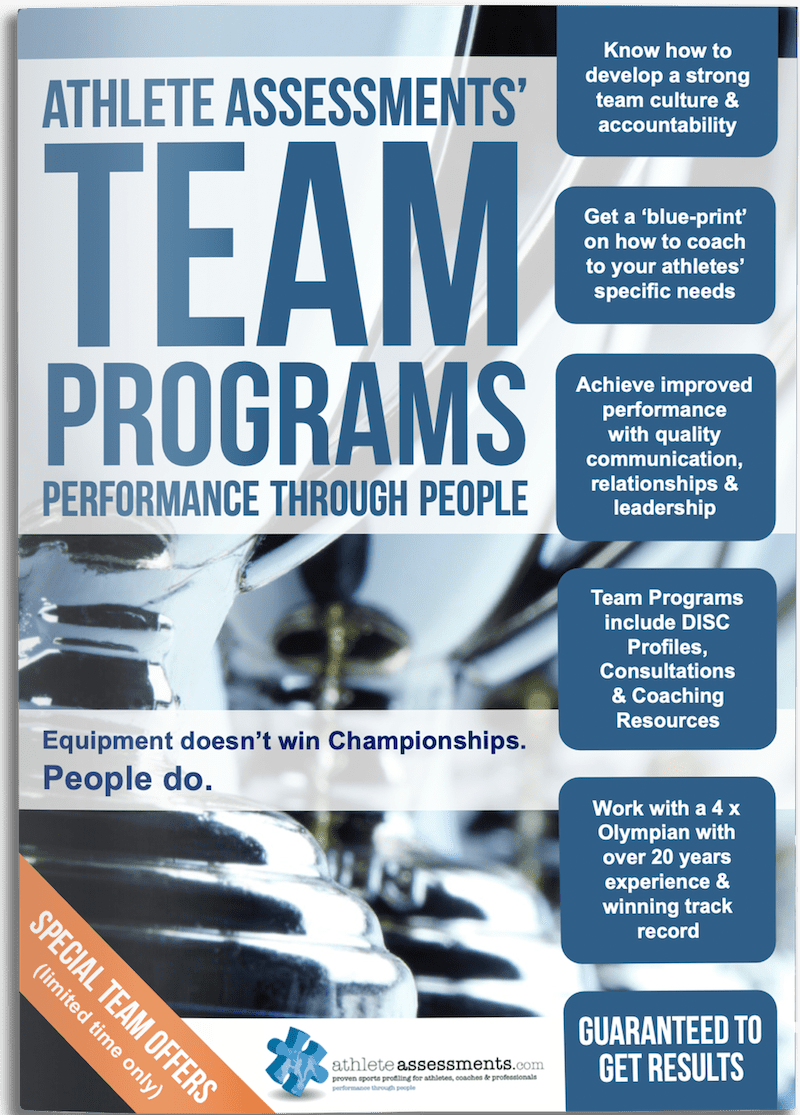Basics of DISC Profiling in Sport: 5 Minutes with Bo Hanson
We’re going to chat a little bit about the basics of DISC. As you know Athlete Assessments uses DISC as the core of all of the work that we do. I just wanted to give you a few quick tips on what DISC is really all about.
First and foremost, DISC is a behavioral model. That means it measures the observable behaviors of what people actually do. It’s talking about how we act – it’s not who we are, it’s not our personality – it’s just about our behavior.
When we talk about behavior, DISC has a four-quadrant style model of how people behave. We have the Dominant Style, the Influencing Style, the Steady Style and the Conscientious Style. All of us exhibit those four behavioral patterns to some degree. DISC is not a ‘this or that’ model, it’s not what we call a dichotomy. It’s literally a scale. Some of us have higher level of Dominance, some of us have higher levels of Influence. Sometimes we can combine two or three styles. No one is high in all four of these areas.
But as I said, first and foremost, DISC is about behavior. The big difference between behavior and personality, and this is the key reason that we use DISC, is that behavior is flexible. You can actually change your behavior. The other thing about behavior is that it is what you feel is the most appropriate behavior in the context of a given environment. The environment can influence behavior significantly.
The other key thing about DISC is that it’s not about what’s right and what’s wrong. Therefore, it’s not about trying to improve upon your profile. Some other models do actually try to improve upon your profile and try to help you get better at certain things. No doubt you’ll get better at non-preferred behaviors but ultimately that will never show through so much in your profile. Everyone has preferred behaviors, the same as you have a left and right hand preference. For example, given the environment that you’re in, your left hand, which is your non-preferred hand may need to be utilised more. If that’s the fact, you may get better at using your non-dominant hand. However, it never becomes your dominant hand.
So whatever profile you have, and this is interesting given we’ve profiled now 17 thousand athletes, coaches, administrators and managers, we haven’t found that there is a common combination of profile that is going to guarantee you success. Every profile is useful. Every profile has its strengths and every profile has its limitations.
DISC as a model has been around since the 1920’s, in 1928 a book was written called The Emotions of Normal People by William Moulton Marston. What was really interesting is that he never copyrighted DISC. So over the proceeding years, what’s happened is that other people – psychologists and behavioralists have looked at that model and further enhanced it to the point that today it’s the most recognized, most utilized, the most valid and it’s the most statistically reliable model that we have available.
Hopefully those key things about DISC will help you to understand it a little bit better and to utilize it a little bit better as well.
At Athlete Assessments, we’re experts in the people side of sport. We know sport and live high-performance every day. Our reputation and proven success at the elite level speaks for itself. The results that our National, Olympic, Professional and Collegiate team clients achieve directly reflects their focus on getting the people side right.
Looking to catch up?
You can watch all videos in the 5 Minutes with Bo Hanson series.
At Athlete Assessments we’re here to provide you with excellence in service and to help you be your best. If there is anything we can do to be of service, don’t hesitate to contact us.






